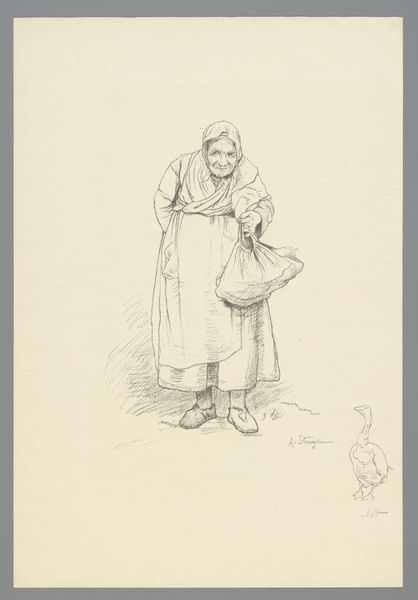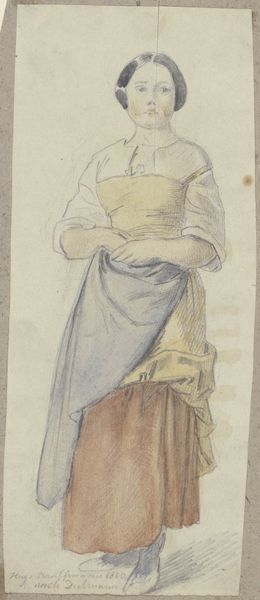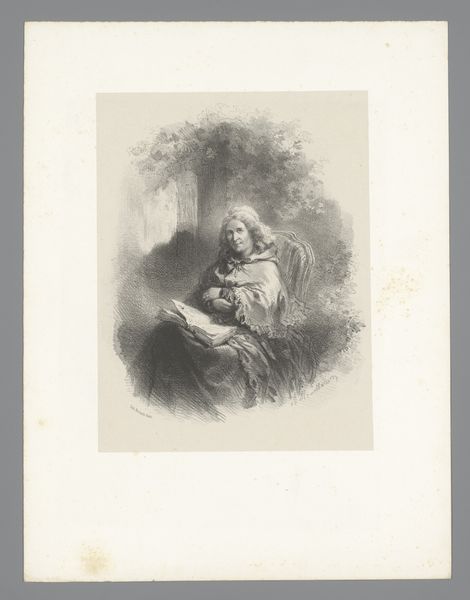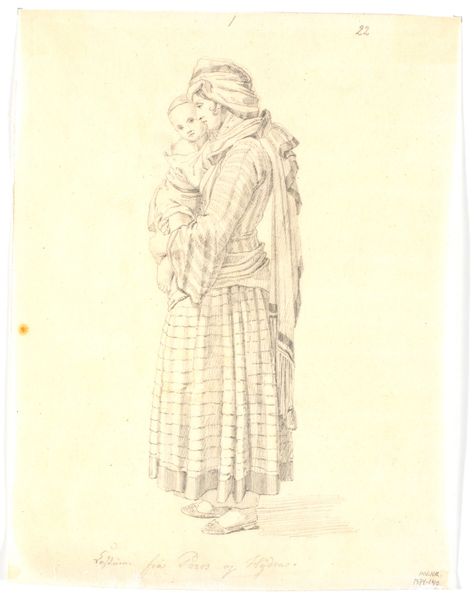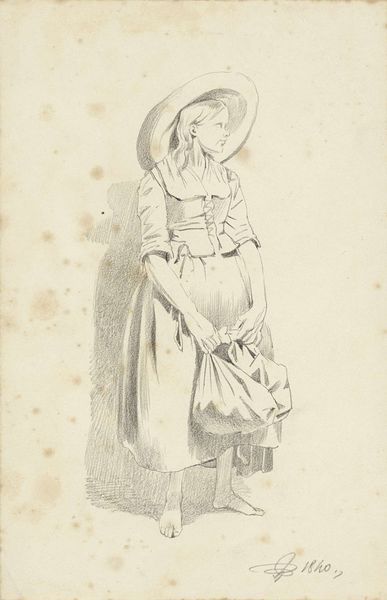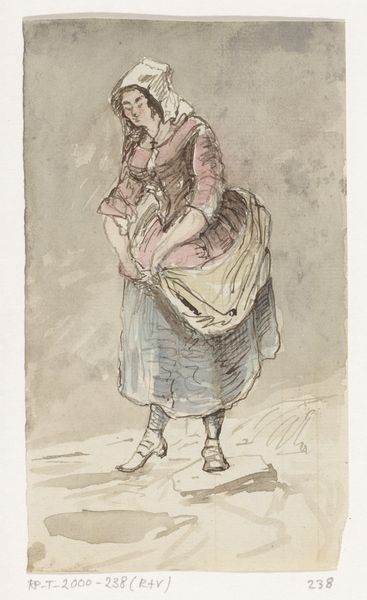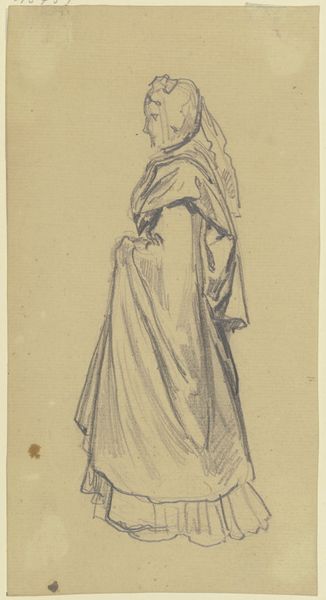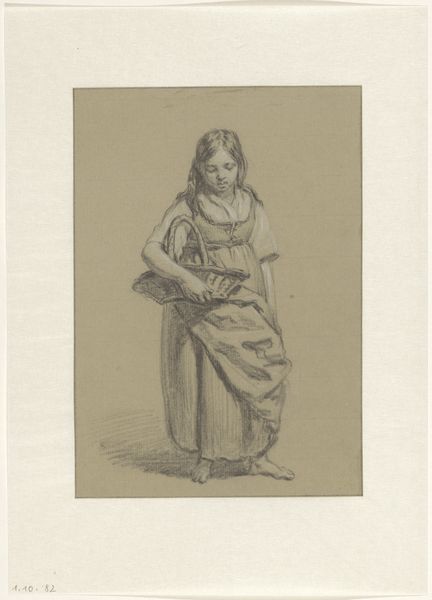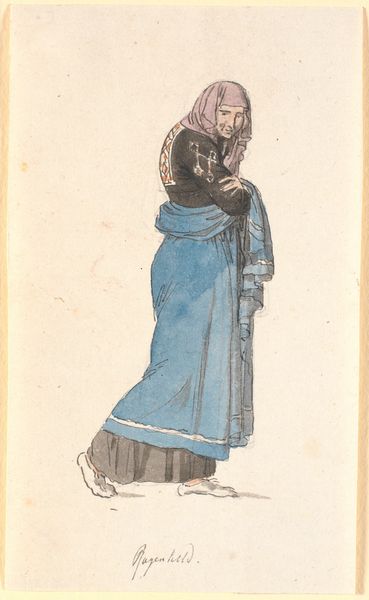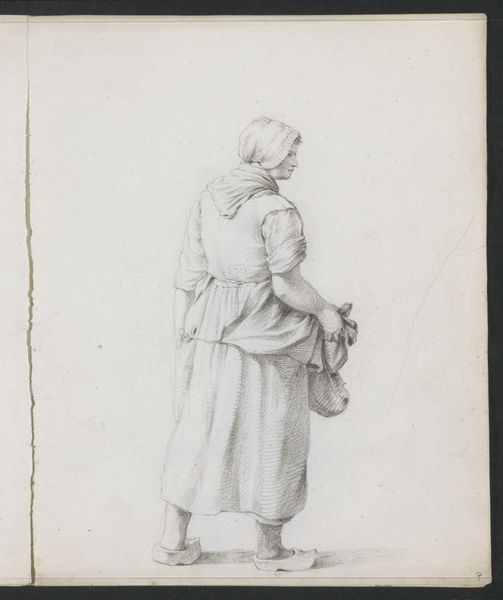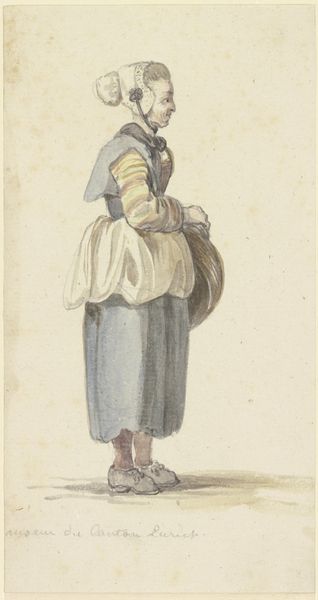
Italienerinde med sit diende barn, øverst blyantstudie af - formodentligt - hesteben 1846
0:00
0:00
drawing, watercolor
#
portrait
#
drawing
#
landscape
#
figuration
#
watercolor
#
romanticism
#
genre-painting
#
watercolor
Dimensions: 206 mm (height) x 124 mm (width) (bladmaal)
Editor: So, here we have "Italian Woman with her Nursing Child, with a Pencil Study of - presumably - Horse Legs" by Johan Thomas Lundbye, made in 1846. It’s a delicate drawing, a blend of watercolor and pencil, with an unexpected combination of subject matter, really. What strikes me most is the contrast between the intimate scene of motherhood and the almost ghostly sketch of the horse legs hovering above. How do you interpret this work? Curator: The presence of both the intimate portrayal of the Italian woman and the sketch of the horse is really very telling. Motherhood, a timeless, universal symbol, meets the horse—itself loaded with significance. Horses have often represented power, freedom, but also labor. The juxtaposition could be a commentary on the lives of women, perhaps suggesting both their nurturing role and the burdens they carry, echoing a connection with nature. Editor: That’s interesting. I hadn’t thought of the horse as representing a burden. It's so faint, almost like a fleeting thought. Curator: Yes, and that ephemeral quality reinforces its symbolic function. It appears and almost disappears, not entirely here or there, an image of strength underlying her care for her child. Does the woman's garb give you any ideas of a connection to folklore or region? Editor: Not especially, beyond noting its difference from typical Danish clothing from the time period, reinforcing her status as a visitor, almost an exotic other. It’s like he is documenting what’s in front of him and also pondering what it represents, beyond the literal. Curator: Precisely! Lundbye’s romantic approach blends observation with an exploration of cultural memory. He is using the universal language of motherhood, connecting it to earthly toil and perhaps even the dreams and desires represented by the horse. It's a beautiful collision of intimacy, representation, and symbolism. Editor: This makes me see the drawing in a new light; Lundbye used these everyday scenes to build a rich network of meanings through symbols, prompting all kinds of powerful emotions about people, places, and animals. Curator: Indeed, art can be the memory we never knew we had, retrieved through careful looking.
Comments
No comments
Be the first to comment and join the conversation on the ultimate creative platform.

